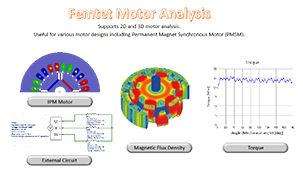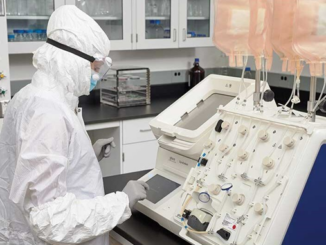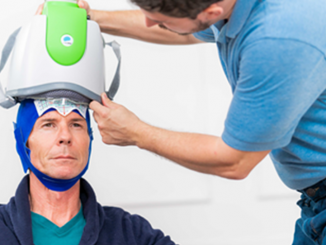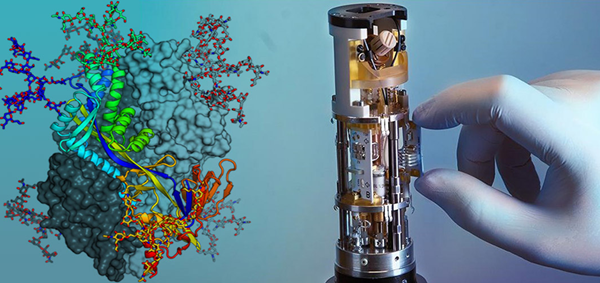
Two programs involving MagLab, the National High Magnetic Field Laboratory headquartered at Florida State University in Tallahassee, Florida, illustrate one of its unique capabilities — as a center of cutting-edge research for advancements in medicine and biotechnology. One program involves renewed funding from the National Institutes of Health for several efforts in nuclear magnetic resonance; the other an agreement for collaboration between MagCorp, an innovative new commercial partner with the lab, and medical equipment maker Philips seeking new breakthroughs in reduced-helium magnetic resonance imaging.
The largest and highest-powered magnetics lab in the world, and with partner sites at University of Florida and Los Alamos National Laboratory, MagLab supports groundbreaking discoveries in numerous areas using high field magnets. With its expertise and equipment for NMR and superconductor research, biotech is one of them.
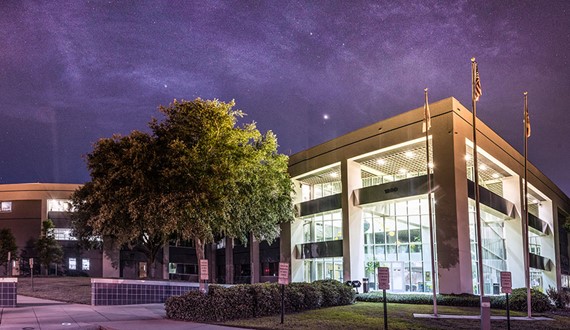
Announced June 28, it will receive $5.3 million from the National Institutes of Health over the next five years for its researchers to develop new techniques to probe intricate processes of the human body. The funding renews a grant first awarded to the lab in 2017 to create a Biomedical Technology Resource Center.
The NIH funding will spur technological advances at its powerful Nuclear Magnetic Resonance facilities at both the FSU and UF locations, enabling research into key biochemical and biological processes at the molecular level. Clearer pictures of biomolecules can advance our understanding of health, various diseases, and related complications and cures including fatty liver disease, fungal infections and drug resistant bacteria.
“We’re thrilled to have this funding,” said Rob Schurko, NMR/MRI program director at MagLab and FSU professor of chemistry. “NMR offers the potential to observe the most subtle changes and differences in molecular structure – but the NMR signals are terribly weak. So, a major focus of this grant will be about developing the technology required to boost NMR signals and applying it to really complicated problems and systems in biochemistry and biomedicine.” The NIH funding will advance three areas of technology development at the lab.
The first focus is use of superconducting detectors to give NMR enough sensitivity to analyze extracts from biological fluids such as blood and urine. This is NMR researcher Bill Brey’s area of expertise. Brey is a co-principal investigator on the grant and research faculty at MagLab/FSU. “This NIH grant gives our technology group the additional resources we need to use new technology to help solve problems in basic biological sciences that are key to improving health care,” Brey said.
The second focus will be enhancing a process called Dynamic Nuclear Polarization which uses special chemical additives known as biradicals along with microwave radiation to enhance the NMR signal from molecules that are hard to observe using conventional instruments.
The third focus leverages the record-high magnetic fields found only at the MagLab including the world’s strongest NMR magnet, the 36 Tesla Series Connected Hybrid, along with a 32 Tesla All-Superconducting Magnet, and a world-class 14.1 Tesla dynamic nuclear polarization NMR platform. “We have the highest fields at MagLab,” Schurko said. “So let’s try to use them and get some wild science done. This NIH project represents a really integrated approach involving a lot of talented people at MagLab, FSU, UF, and from around the world.”
One of the ultimate goals in pushing the NMR technology to new limits is opening up the Periodic Table of Elements to investigate biological systems, since many elements of importance in biology have isotopes that are very hard to see with NMR techniques. “Over the last 5 years, with funding from our previous grant, we have been able to investigate oxygen and calcium sites in biomolecules and biomaterials,” notes Schurko. “This work has paved the way for future NMR experiments on zinc, copper, sulfur, and maybe even iron. These are some of the most challenging elements for NMR.”.
The co-principal investigators, Schurko, Brey, and Joanna Long from UF, will be joined by seven other faculty and staff scientists in conducting research. The Biotechnology Center will also feature 30 collaborators from eight countries, as well as personnel from the UF College of Medicine and UF Department of Chemistry.
Funded by the National Institute for General Medical Sciences, the MagLab team will also train a new generation of NMR users, including graduate and undergraduate students, through workshops, educational activities, publications and presentations. “The MagLab is a world-unique resource for U.S. and international scientists alike. This grant will go far to creating new research opportunities and technologies that would otherwise not be possible,” said Schurko.
Exploring Superconducting Magnet Technology to Eliminate Helium in MRI Systems
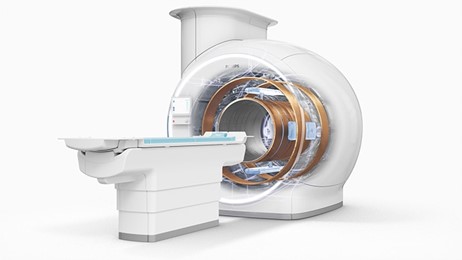
The other effort involves the pursuit in the healthcare community to get rid of bulky, cumbersome and expensive helium systems for cooling MRI magnets. Philips pointed the way with its introduction of BlueSeal sealed MRI magnet technology in 2018 and now, through an innovative new research firm that organizes commercial projects in collaboration with MagLab, the Dutch medical equipment company seeks to develop new breakthroughs.
It recently engaged in a research partnership with Tallahassee-based MagCorp to explore superconducting magnets for MR scanners that do not require cooling to ultra-low temperatures (-452 °F or -269 °C) using liquid helium.
MagCorp announced in December that it has signed an agreement with Philips to connect scientists from MagLab with industry professionals focused on making MRI imaging more affordable, accessible, and sustainable. The deal between MagCorp and Philips is the result of continued collaboration and work among a variety of partners including Florida State University, the National MagLab and the Tallahassee-Leon County Office of Economic Vitality.
“Industrial advancement outside of current MRI technology is bringing new capabilities into play that have historically been out of reach for MRI Magnets,” said Josh Hilderbrand, director and head of MRI magnet research and development with Philips. “Finding ways to leverage emerging technologies and apply them to MRI has the potential to increase accessibility, impacting more lives in support of Philips’ mission and vision. FSU’s MagLab offers us key resources in researching technologies for lower cost MRI options — and MagCorp provides easy access to these key resources.”
The agreement between Philips and MagCorp allows MagCorp to hire MagLab researchers as consultants to work on technological hurdles such as the current magnet technologies and their supporting infrastructure. MagCorp is a Tallahassee firm founded by a trio of former and present MagLab staffers that aims to harness the power of experts from the world’s premier magnet facility to solve real-world problems. The company and FSU have a five-year agreement that extends to 2025 to share resources and intellectual property rights in an effort to strengthen relationships between the university and private industry.
“This is a new team approach to leverage the MagLab’s incredible research capabilities to address big technical challenges faced by the private sector, all while helping to grow our local economy,’ said Greg Boebinger, MagLab director. (Note: After nearly 20 years as director, Boebinger has since resigned from his position to return to the FSU faculty. A recruitment effort for a replacement is in process, as of this writing.)
“We are excited and honored to be working with Philips and FSU,” said Jeffrey Whalen, director of MagCorp. “This is just the beginning of a new age of public-private partnership in which FSU’s research capabilities will be fully connected to the global marketplace.”
“Florida State University’s MagLab, part of the U.S. National High Magnetic Field Laboratory, is home to many of the world’s leading researchers on novel superconducting materials that don’t require liquid helium temperatures to operate. Philips has decades of MR scanner design and development experience, including most recently the launch of the BlueSeal magnet technology,” notes Hilderbrand. “Combining these resources with MagCorp’s research facilitation services will help leverage the latest technology to accelerate access and availability of MRI to more patients and healthcare providers.”
“MagCorp is proud of this partnership, which brings together Philips’ game-changing BlueSeal magnet technology and the FSU MagLab’s unrivaled knowledge base about superconductors that can operate in a helium-free environment,” said Whalen. “Combining Philips’ forward-thinking approach with FSU MagLab’s scientists, who have a wealth of relevant expertise in the application of new superconductors, means Philips will be in the best position to develop innovations around this technology.”
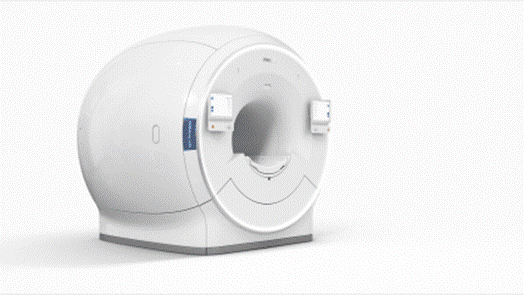
With its BlueSeal magnet technology, Philips already has a commercially available non-venting MRI scanner in widespread use that once charged with a small amount of helium (7 liters instead of a conventional scanner’s 1,500 liters) are sealed and operate without requiring additional helium for their entire operational life. Clinical MRI scanners that completely eliminate the need for helium are a clear direction for innovation in the long term. Using high-temperature superconductors supports a complete shift towards helium independence.
The research partnership will focus on characterizing and demonstrating the feasibility of appropriate superconducting materials capable of operating at higher temperatures than today’s niobium-based superconductors. In common with helium, niobium is also a scarce element, whereas some of the new materials being investigated by the research team are based on more abundant elements. In addition to basic materials research, the team will also investigate the steps needed to commercialize the materials, and the technologies needed to enable their use in future MRI scanners.
For more info, see www.nationalmaglab.org, www.philips.com, www.magneticscorp.com.

